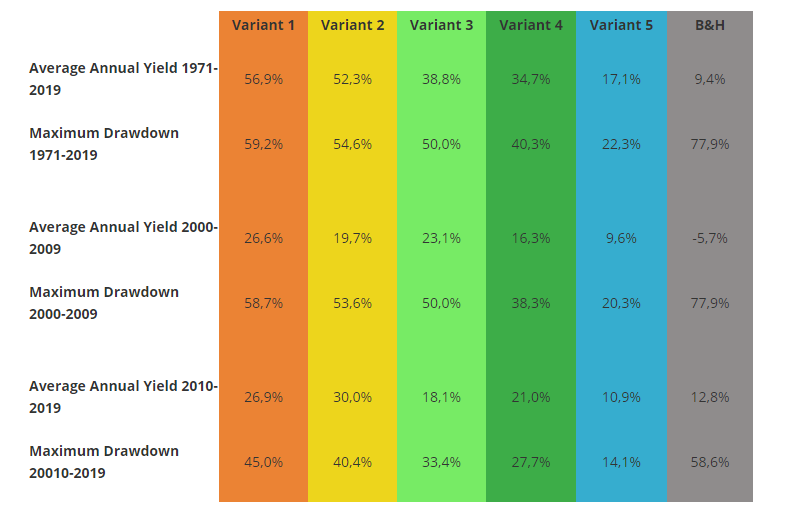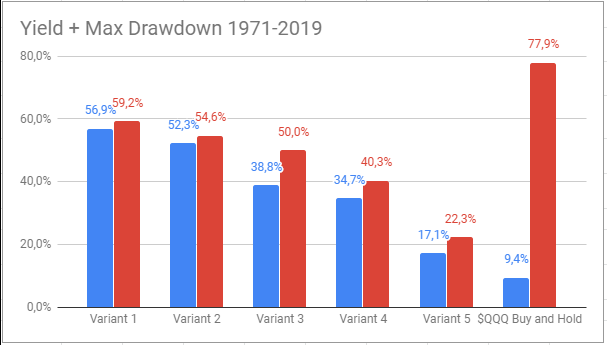The performance of the HST model is amazing (30-50% per year on average), but it shows significant drawdowns (-35/50% in some cases).
In bad times of the markets investors could panic and get out of the model, hurting themselves: seeing our capital cut in half would destroy the believes of many.
Another way to reduce volatility and risk: I have to choose a trading strategy which is more adequate to my risk profile.
Here's how to manage this very important issue
The HST model gives signals. Using with signals, investors shift among 3 positions
- Aggressive Long
- Moderate Long
- Cash/Short
The original version of the model (actual variant 2) suggests the investors to go
- 100% $TQQQ
- 100% $UPRO
- 100% Cash
but we can apply less risky ETFs (with less or no leverage) and reduce drawdowns consequently.
In some cases, we can apply an inverse ETF (like $QLD) instead of going Cash to take advantage of the bear markets too.
These options build up a set of strategies, each suitable for different risk profiles.
(variant 1 is the most risky/volatile, variant 5 the less risky/volatile)
[Note: when we choose to apply the HST model with leveraged ETFs, we apply it only for a part of our invested capital: this is money we do not need for our regular life. We are making a risky bet to see our capital grow, but you never go all-in with that bet, just invest a small part of capital]
5 Variants of the HST model |
||||||
| popular! higher risk |
popular! |
|||||
| Status of the market and the Economy | Variants / Positions | Variant 1 | Variant 2 | Variant 3 | Variant 4 | Variant 5 |
| Running bull market or Strong momentum | Aggressive Long (AL) | 100% $TQQQ | 100% $TQQQ | 100% $QLD | 100% $QLD | 100% $QQQ |
| Weak Momentum in a bull market, or deteriorating macro indicators | Moderate Long (ML) | 100% $UPRO | 100% $UPRO | 100% SSO | 100% $SSO | 100% $SPY |
| Weak momentum and possible bear market ongoing | Cash / Short (C/S) | 100% $PSQ | 100% Cash | 100% PSQ | 100% Cash | 100% Cash |




